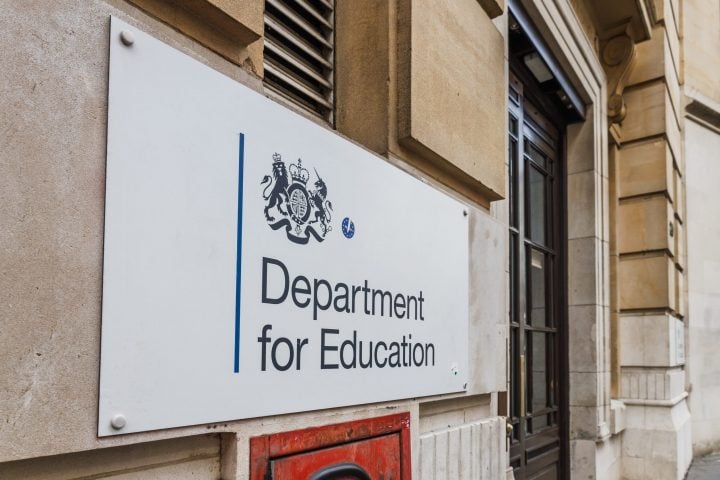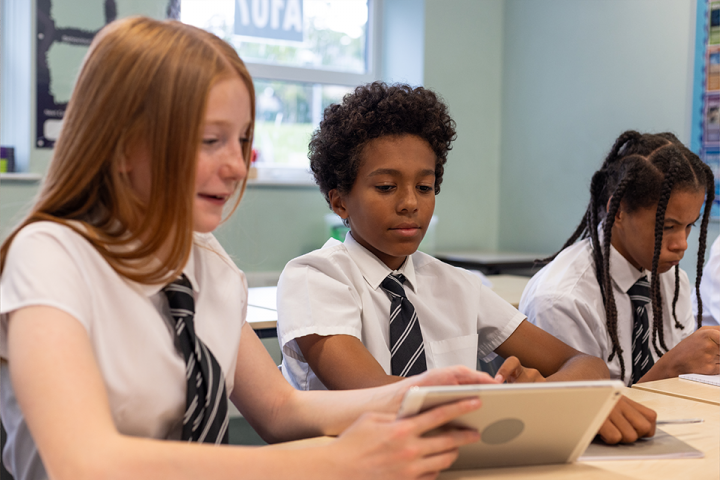A Curriculum Fit for the Future? Media and Information Literacy in Schools
Published: 4th November 2025
Updated: 7th November 2025
Published: 4th November 2025
Updated: 7th November 2025
The government’s new curriculum will make media and information literacy (MIL) compulsory in schools for the first time. For nearly 20 years, First News has been helping kids to read between the headlines. Here’s why it matters!

It’s official: media and information literacy matters. So, what now?
For the first time, the government is making citizenship education compulsory in primary schools, with media and information literacy (MIL) embedded at both primary and secondary levels. It’s a huge step forward.
All children will now learn practical media literacy skills – from spotting fake news to identifying misinformation and disinformation. These skills are designed to protect them from online harms and build the critical thinking they’ll need to challenge and engage with what they see and hear in an increasingly digital landscape. The new framework also brings together financial literacy, law and rights, democracy and government, and climate education, reflecting the government’s ambition to prepare pupils for life in a complex, connected world.
At First News, we argue that it won’t be enough just to add MIL in. It has to be central, properly supported, and taught with real purpose if every child is to thrive in an AI-shaped world.
As First News founding editor Nicky Cox MBE wrote in Teach Primary:
“A child who can spot the difference between a news report and a paid advert is also a child who can be more reflective about the sources they use in history, or the information they find online for a science project. A child who can recognise bias is also one who can approach disagreements in the playground more fairly. These are not ‘extra’ skills. They underpin the kind of confident, curious learning that schools work so hard to foster.”
In today’s world, where anyone can publish anything, children face fast-moving, fragmented information that’s not always trustworthy. Teaching MIL isn’t a ‘nice-to-have’ – it’s essential.
Strong MIL teaching:
Builds critical thinking and confidence across the curriculum
Protects children from misinformation or manipulation
Encourages curiosity and independence
Develops resilience to online harms such as conspiracy theories or hate speech
Promotes empathy and understanding through access to diverse perspectives
Prepares children for democratic engagement and informed citizenship
To support the delivery of great MIL teaching across the curriculum, First News have produced FREE progressive primary and secondary frameworks, in partnership with the Media and Information Literacy Alliance (MILA).
Since its introduction in 1988 under Margaret Thatcher (who saw it as an obvious way to test and compare schools, driving improvement via a free market model), the National Curriculum has gone through several revisions. It was first updated in 1995, with reduced content, then reviewed and republished again in 1999 and 2007.
The last, and most significant, reworking of the National Curriculum came under Michael Gove in 2014. His vision was to create a much more rigorous, knowledge-based curriculum that aligned with international standards and raised educational achievement. Since 2014, all non-academy schools (and realistically, most academies) have taught this version – even though the world looks very different now from how it did over a decade ago.

No single curriculum is going to please everyone, but criticism of the current model has grown. Educators argue that it:
When Labour won its massive majority in 2024, it announced a full overhaul of the National Curriculum. Professor Becky Francis CBE was appointed to lead an independent curriculum and assessment review.
The government promised “a broader, richer, cutting-edge curriculum that drives high and rising schools standards and sets all young people up for life and work”. Importantly, Labour also committed to bringing academies back within the National Curriculum framework – meaning every school will follow it.
After a consultation period (to which First News contributed), the Review Panel issued an interim report in 2025, setting out four priorities:
A system that works for all
Curriculum shape and content
A curriculum ‘fit for the future’
16–19 pathways and qualifications
Under that third heading – ‘a curriculum fit for the future’ – sits media and information literacy. In the interim report, the Review Panel promised to “consider how best to equip children and young people with the essential knowledge and skills which will enable them to adapt and thrive in a rapidly changing and AI-enabled world”. Since then, consensus has grown that MIL must play a central role in achieving that goal.

Recognising this importance, the House of Lords Communications and Digital Committee launched an inquiry into media literacy in March 2025.
First News submitted written evidence, and Fran Yeoman, Associate Professor in Journalism & Media Literacy and Head of Journalism, LJMU, who helped co-create the First News MIL Frameworks, gave evidence before the committee.
The Committee’s final report stated clearly:
“Media literacy must now be embedded across the National Curriculum”
Committee Chair Baroness Keeley added:
“Too often, media literacy is relegated to a one-off lesson or annual assembly. That is not good enough.”

The real test will be how MIL is implemented.
If it’s treated as a brief mention within citizenship lessons, it risks becoming a tickbox exercise – especially in primary schools new to citizenship education.
That’s why we developed First News TeachKit: Media & Information Literacy, to support the integration of great MIL teaching across the curriculum.
For MIL teaching to be effective, it must be:
Without this, delivery could become inconsistent across the country.
As Fran Yeoman explains:
“Teachers already understand the importance of media and information literacy. What they need now is clarity and commitment from government. If we want every young person to develop the skills to question, evaluate and engage with information, then MIL has to be taught with the same structure, progression and rigour as any other subject.”
There is still time for the Department for Education to listen to what teachers, school leaders, parents, and children themselves are saying about MIL.
If this government truly wants “a modern curriculum so young people are ready for work and life”, as stated in the 2024 Labour Party manifesto, then it must ensure that:
Media and information literacy is central, not peripheral, to citizenship education. It should be the lens through which children learn to engage with democracy, society and each other; as well as the whole curriculum.
Assessment and progression are clearly defined. Without this, MIL risks being delivered inconsistently or superficially across schools.
Time and funding are allocated. Schools need the capacity, resources and training to deliver high-quality MIL education from primary through to secondary.
A modern, future-facing curriculum cannot prepare children for the world ahead if it doesn’t equip them to understand, question and shape the information that will define it. The announcement is a major victory for those who have long argued for MIL to take its rightful place in education – but as ever, the devil’s in the detail.
First News reaches millions of young readers every week, at home and at school. Our age-appropriate news stories and activities spark curiosity, build media and information literacy skills and empower children with the tools to navigate the world.